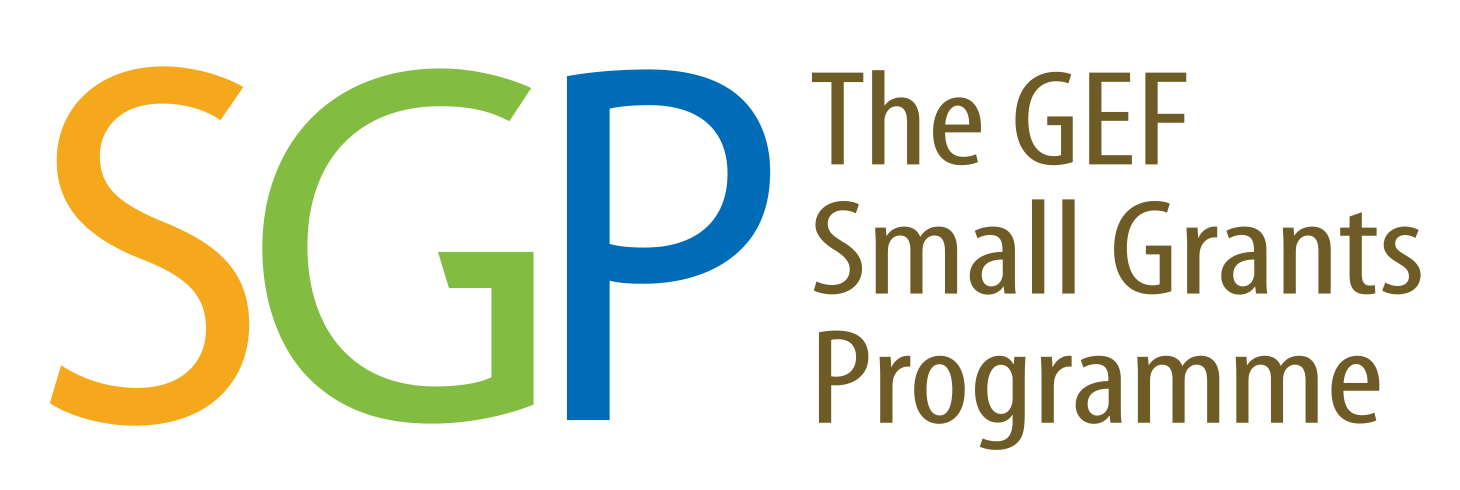Our Lake, Our Life
Protecting their lake and their lifeline, this group from central Madagascar is leading the way in territorial governance, resilience, and local well-being
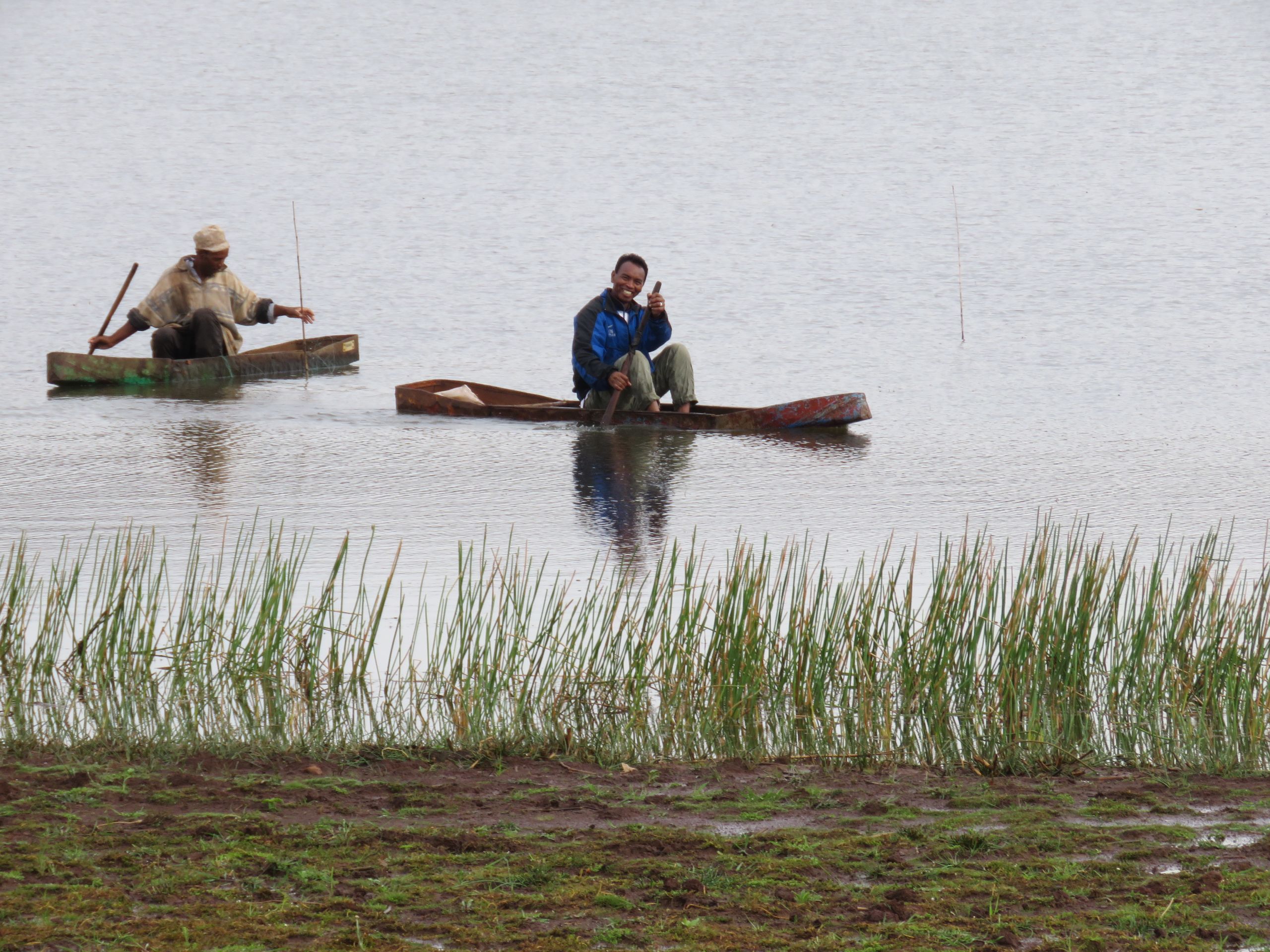
‘This Andranobe Lake: we earn our living thanks to this lake. The fisherman support their wives and children entirely with this lake. We drink the water from the lake, and use it for cooking, all our animals drink there, we do our laundry there, everything! We use it to take care of our entire household. It guarantees our whole life, we also use it to water our crops. We depend entirely on Andranobe Lake.’
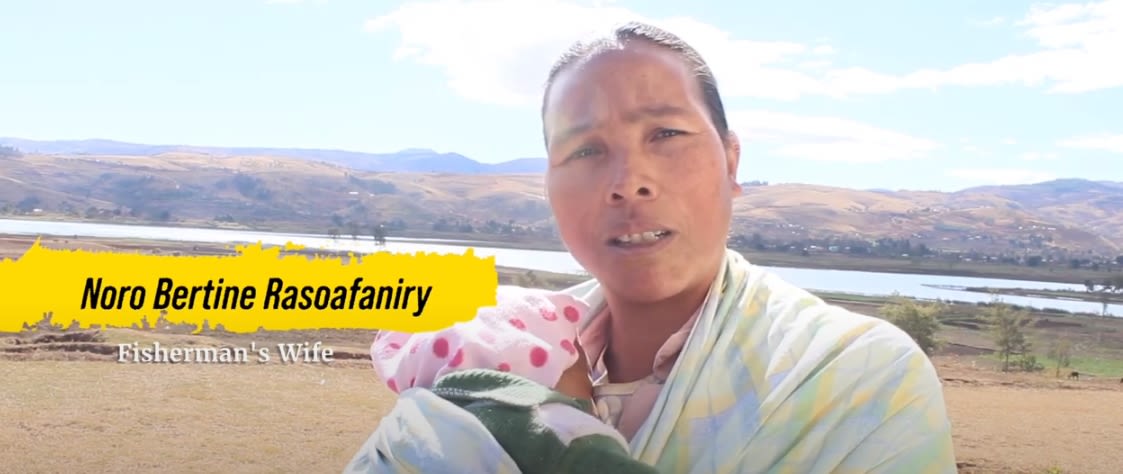
The 90-hectare Andranobe Lake and surrounding 45-hectare Ambohitsokina watershed are essential to the communities they support; together the two supply locals with essential resources such as fish and potable water, which in turn support their livelihoods and household dietary needs.
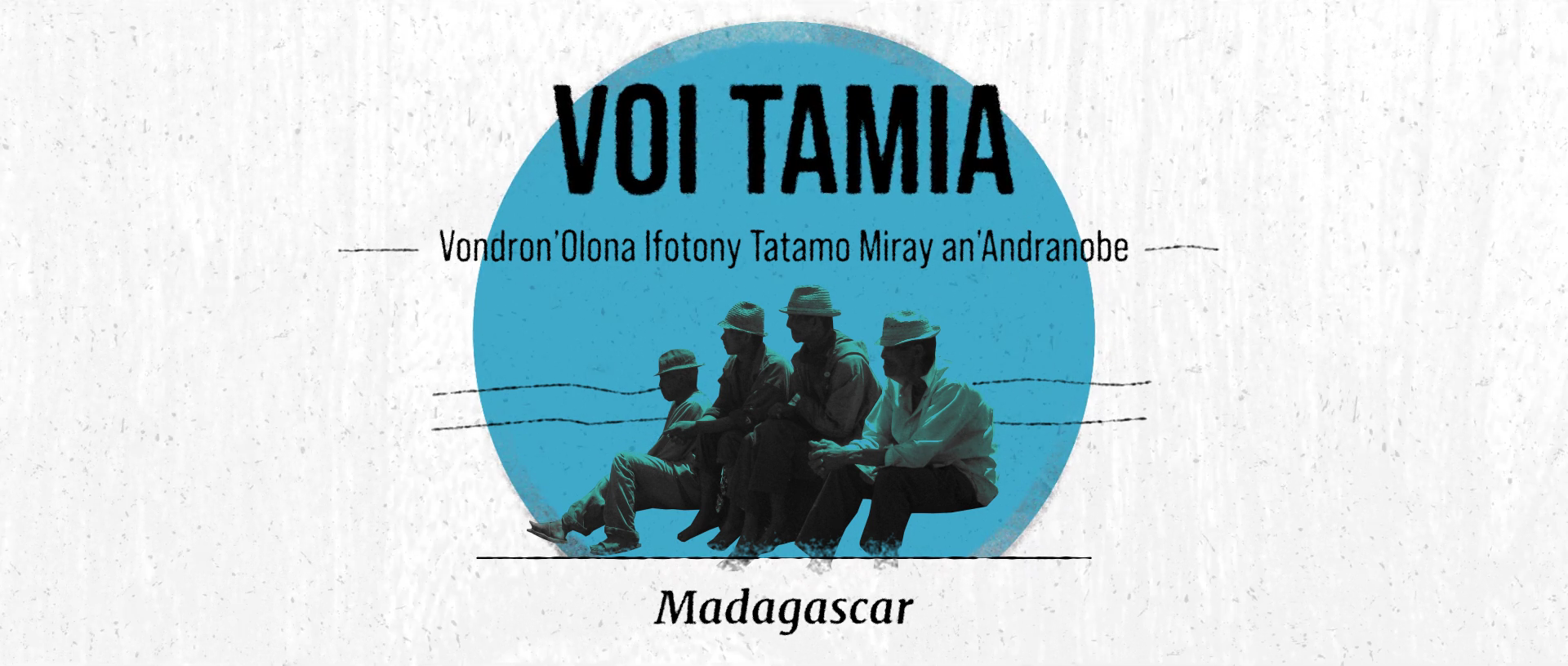
Nature for Water
In 2004, facing the deterioration of Andranobe Lake, which provides the basis for fishing and agriculture livelihoods, four communities in central Madagascar came together to form the community-based organisation Vondron’Olona Ifotony Tatamo Miray an’Andranobe (VOI TAMIA).
Known simply as TAMIA, the name roughly translates from Malagasy to mean Local Community Organisation.
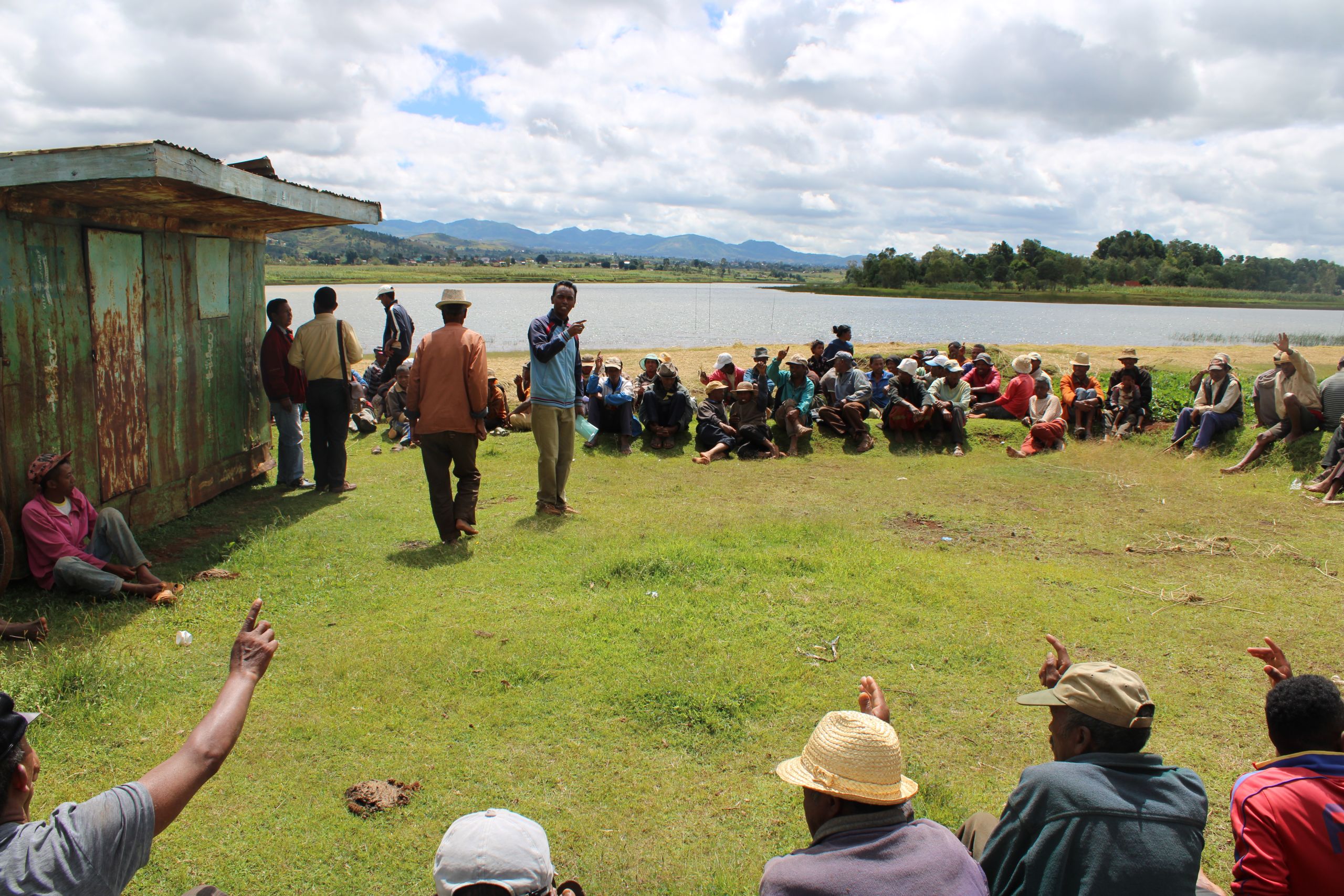
Community engagement, VOI TAMIA 2016
Since 2004, TAMIA has served as a platform to restore the lake’s water level and quality, remove invasive aquatic species, and repopulate fish stocks.
The collective vision to restore and maintain the health of this vital ecosystem is what continues to drive the successful efforts of VOI TAMIA today.
‘From the sustainable management of a lake and its watersheds, TAMIA weaves networks of community institutions in territorial governance for autonomy, resilience and local well-being.’

Community engagement, VOI TAMIA 2016
Community engagement, VOI TAMIA 2016
Celebrating the Power of Local Action
This year, in recognition of TAMIA’s contributions to the sustainable management of the Andranobe Lake and its surrounding watersheds using customary governance systems for over 15 years, they were awarded the prestigious Equator Prize.
Awarded to outstanding local communities and indigenous peoples, the Equator Prize recipients of 2020 have been chosen for their leadership on local sustainable development solutions for people, nature, and resilient communities.
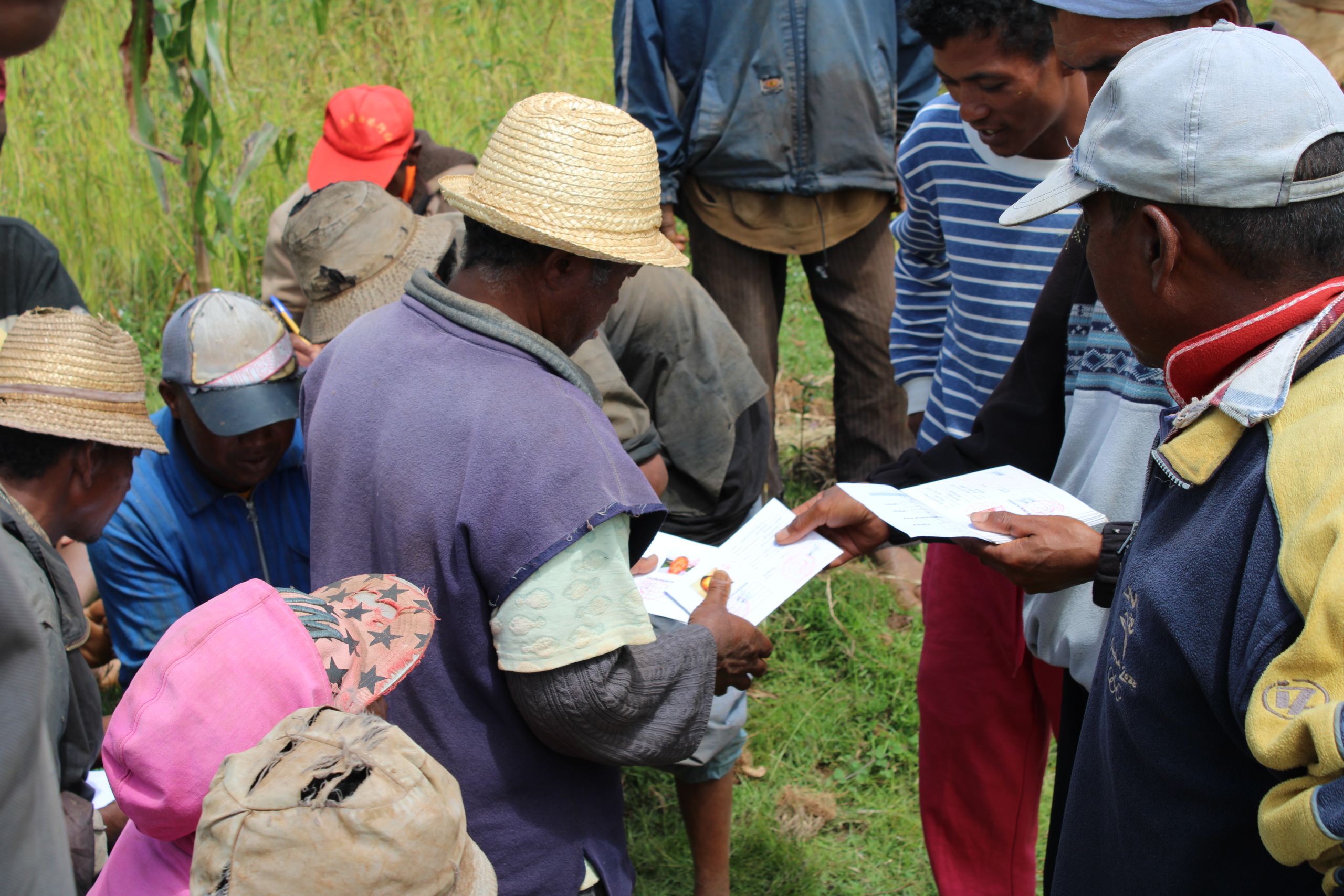
Community members discussing the sustainable management of the Andranobe Lake and its surrounding watersheds, VOI TAMIA 2000
‘As our natural world faces a range of unprecedented challenges, the Equator Prize lifts the curtain on a range of exceptional nature-based solutions pioneered by local communities and indigenous peoples’, says UNDP Administrator, Achim Steiner. ‘Indeed, as countries move to build back better after the COVID-19 pandemic, these innovative ways to protect ecosystems, biodiversity and tackle climate change are more important than ever. I expect that the incredible efforts of the Equator Prize winners will have a ripple effect across the world’.

Community members discussing the sustainable management of the Andranobe Lake and its surrounding watersheds, VOI TAMIA 2000
Community members discussing the sustainable management of the Andranobe Lake and its surrounding watersheds, VOI TAMIA 2000
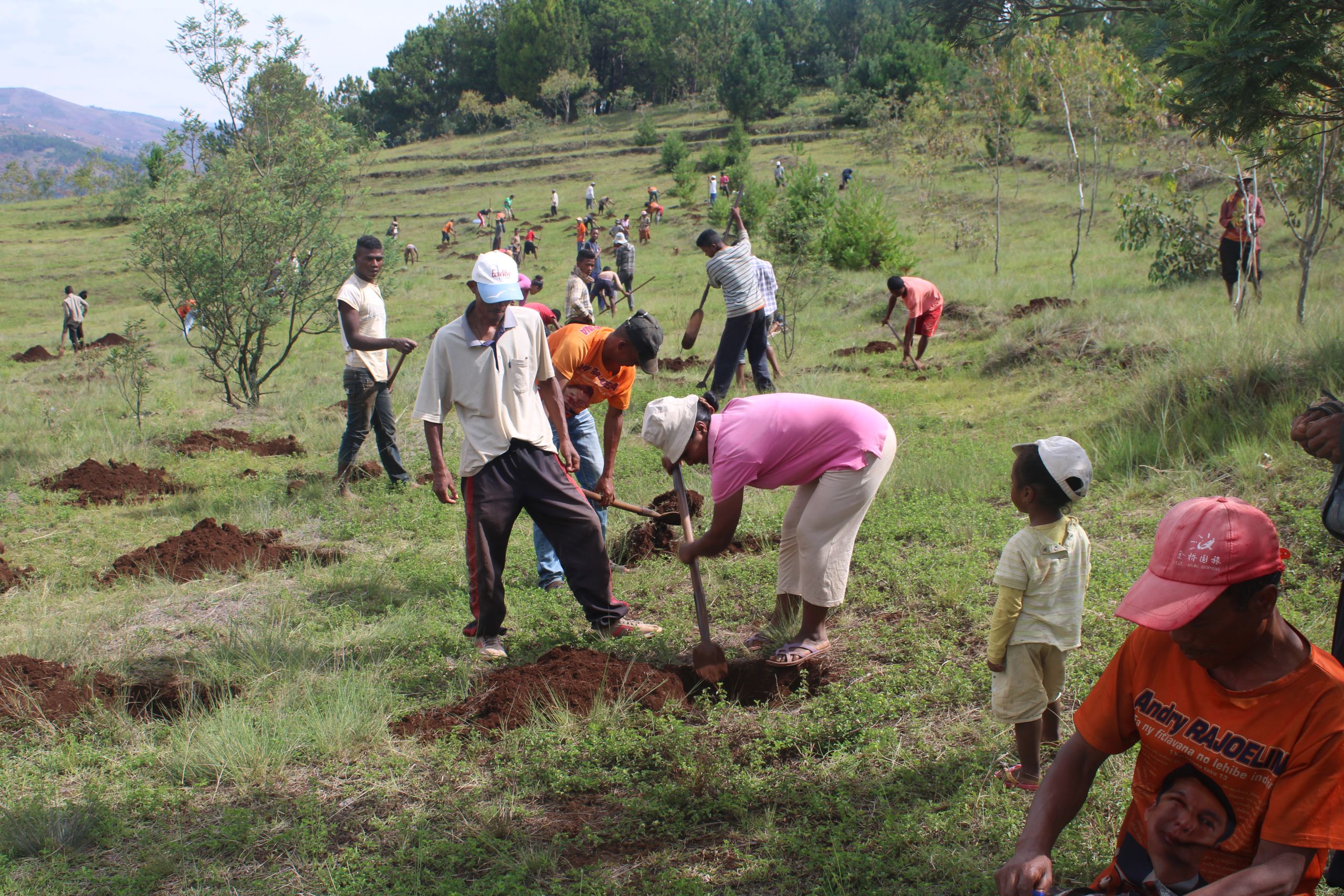
The Fokonolona around the lake join hands to plant trees, VOI TAMIA 2019
The Fokonolona around the lake join hands to plant trees, VOI TAMIA 2019
Territories of Life
Indigenous and Community Conserved Territories and Areas (ICCAs) or Territories of Life possess significant biodiversity, a wide range of ecological services and cultural values that are voluntary conserved by indigenous peoples and local communities (IPLCs) through customary laws or other effective means.
IPLCs’ informal practices have been globally recognized as a critical instrument for biodiversity conservation since 2003.

My Lake, My Lifeline
Before 2004, access to the Lake’s resources was essentially unregulated, and people freely used them without consequences. Many fishermen did not respect the closed fishing season and used nets that did not comply with approved standards.
This overharvesting placed pressure on the lake and resulted in a gradual decline in the quantity and size of fish available, affecting the lake’s productivity.
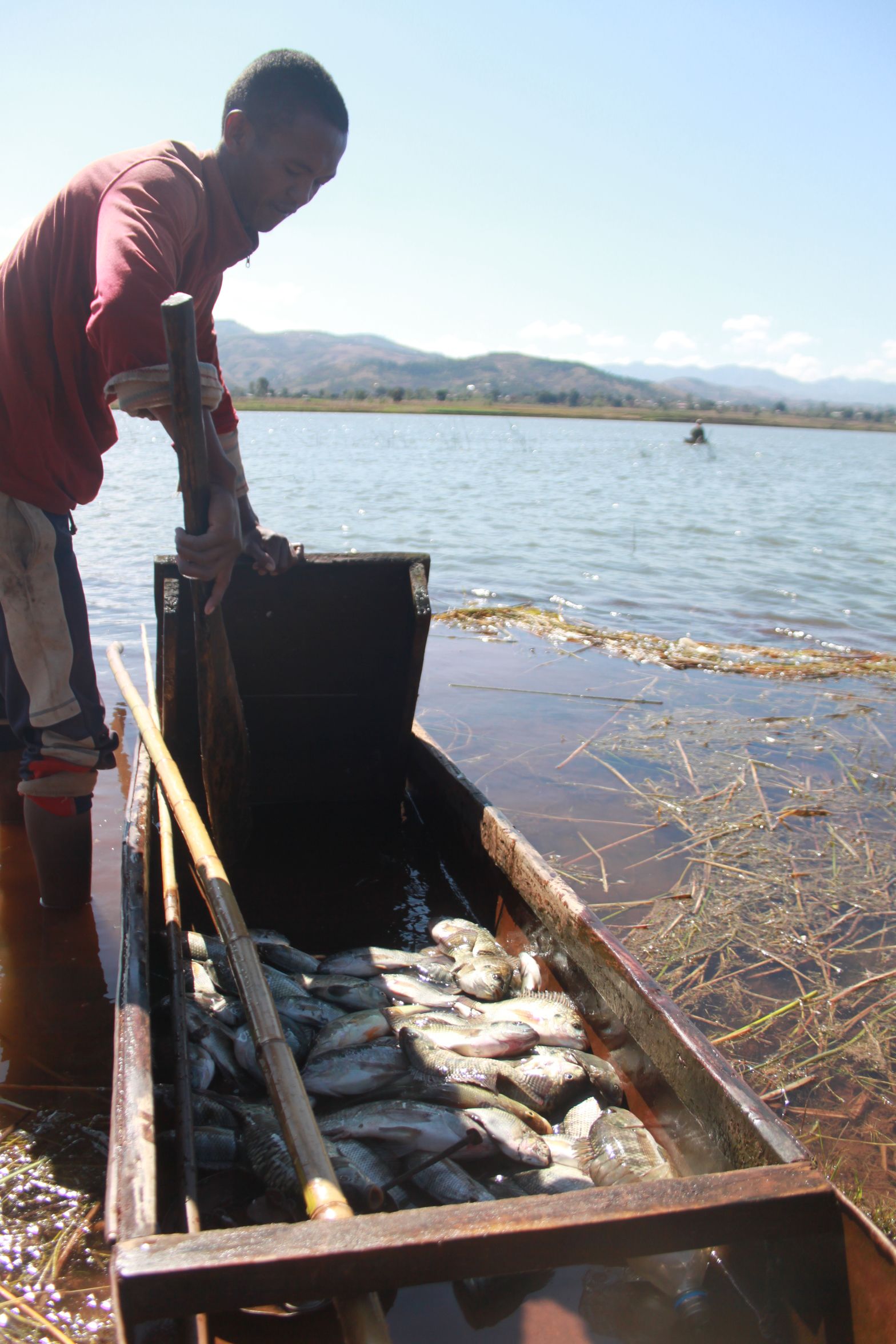
Fisherman, member of the FIFIMPAVA cooperative. Photo: VOI TAMIA, 2015
At the same time, large areas of the surrounding watershed were being cleared of vegetation, and this increased the amount of sediment entering the lake, reducing both the water quality and the water level.
Jean Aime Randrianandrasana, a young fisherman in the village recalls: ‘When I was 6 or 8 years old, I noticed that big fish were very rare.… Fishermen would gather small fish no more than 10 grams each’.

Fisherman, member of the FIFIMPAVA cooperative. Photo: VOI TAMIA, 2015
Fisherman, member of the FIFIMPAVA cooperative. Photo: VOI TAMIA, 2015
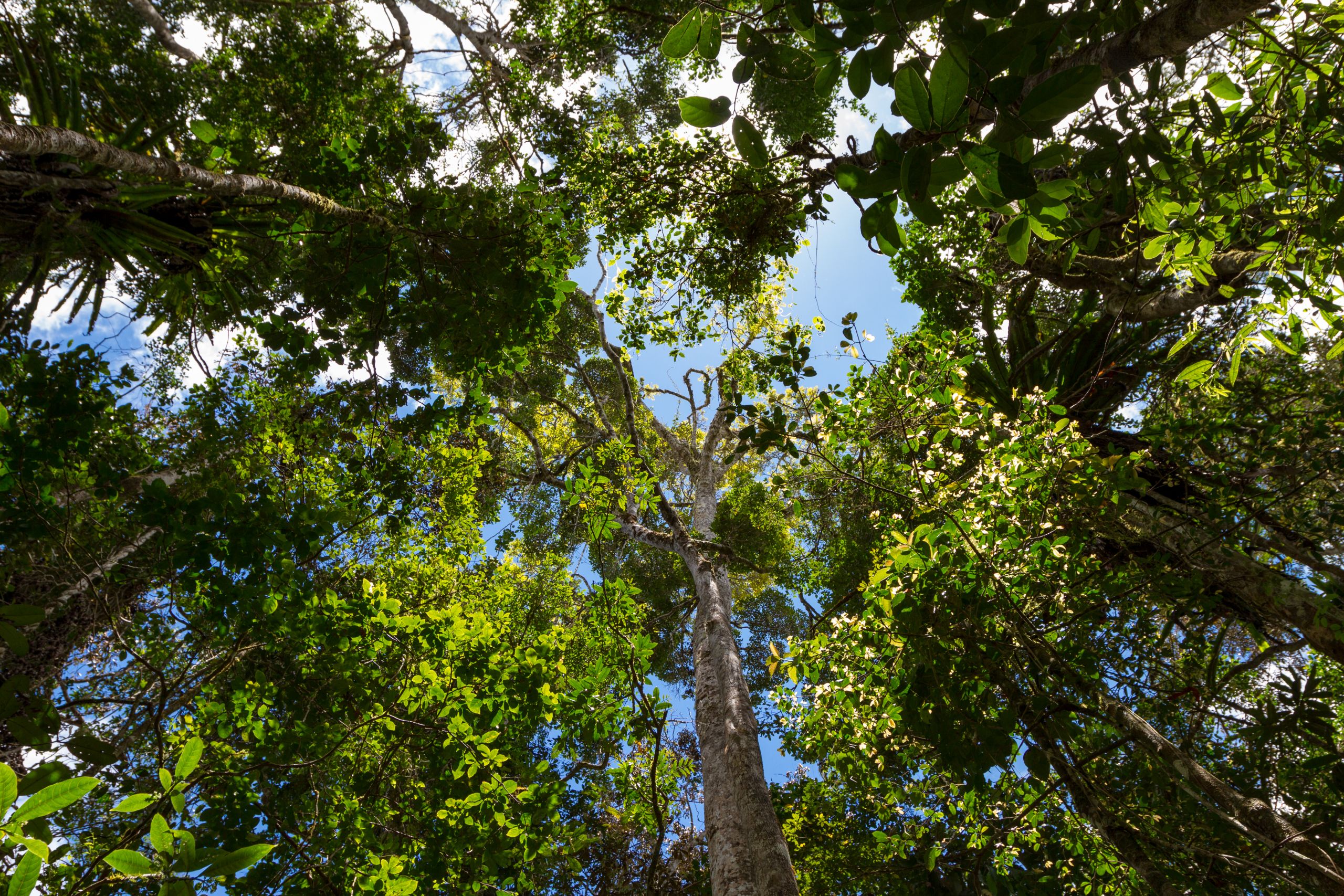
Forest of Andasibe National Park, Madagascar / Photo credit: Gregoire Dubois
Forest of Andasibe National Park, Madagascar / Photo credit: Gregoire Dubois
Customary Social Contracts
For centuries, prior to the colonial period, Malagasy society bound together diverse communities together in a traditional system known as the fokonolona. Deriving from the word foko (tribe) and olona (human), the social system had served to protect villages and their surrounding ecosystems throughout Madagascar’s rich history of human migration and settlement.
In 1996, the government of Madagascar enacted a legislation that would once again allow communities to govern and manage their local natural resources by using customary social contracts known as dina.
The GELOSE legislation, as it is known, recommended that a process be initiated to reinstate a higher degree of autonomy for traditional resource governance by local communities. However, the dina are today still not recognized by the State as Law and are only locally legitimate. In addition, the transfer mechanisms for natural resources implemented by Madagascar’s Forest and Environmental Department do not secure the community land ownership, nor their social, cultural and economic needs.
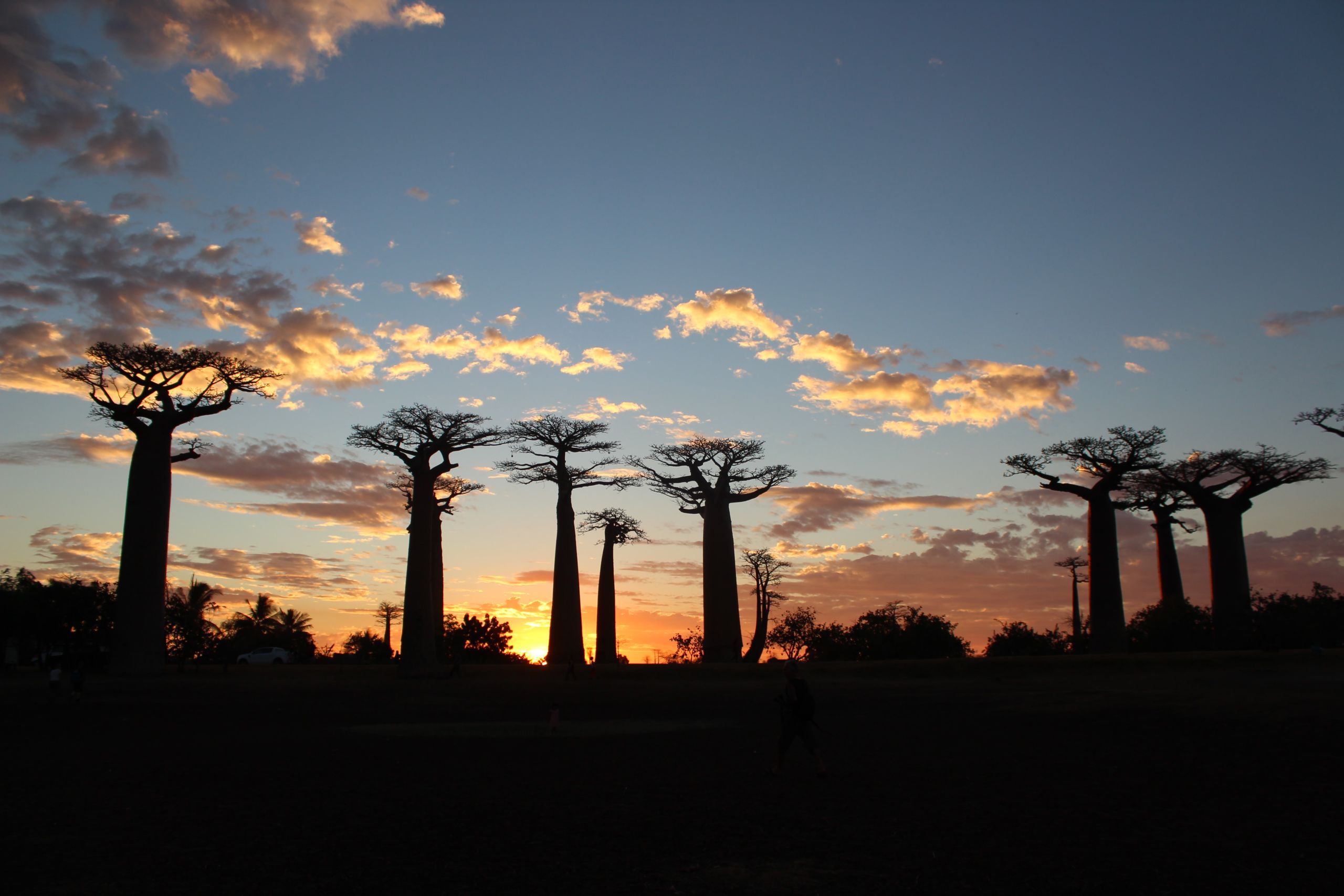
Solutions in Action
As the lake began to deteriorate, locals took heed of the dangers, and in 2004 four communities from the Ambohitsokina upstream area and three lake-side downstream communities - totalling 340 households - came together to form TAMIA.
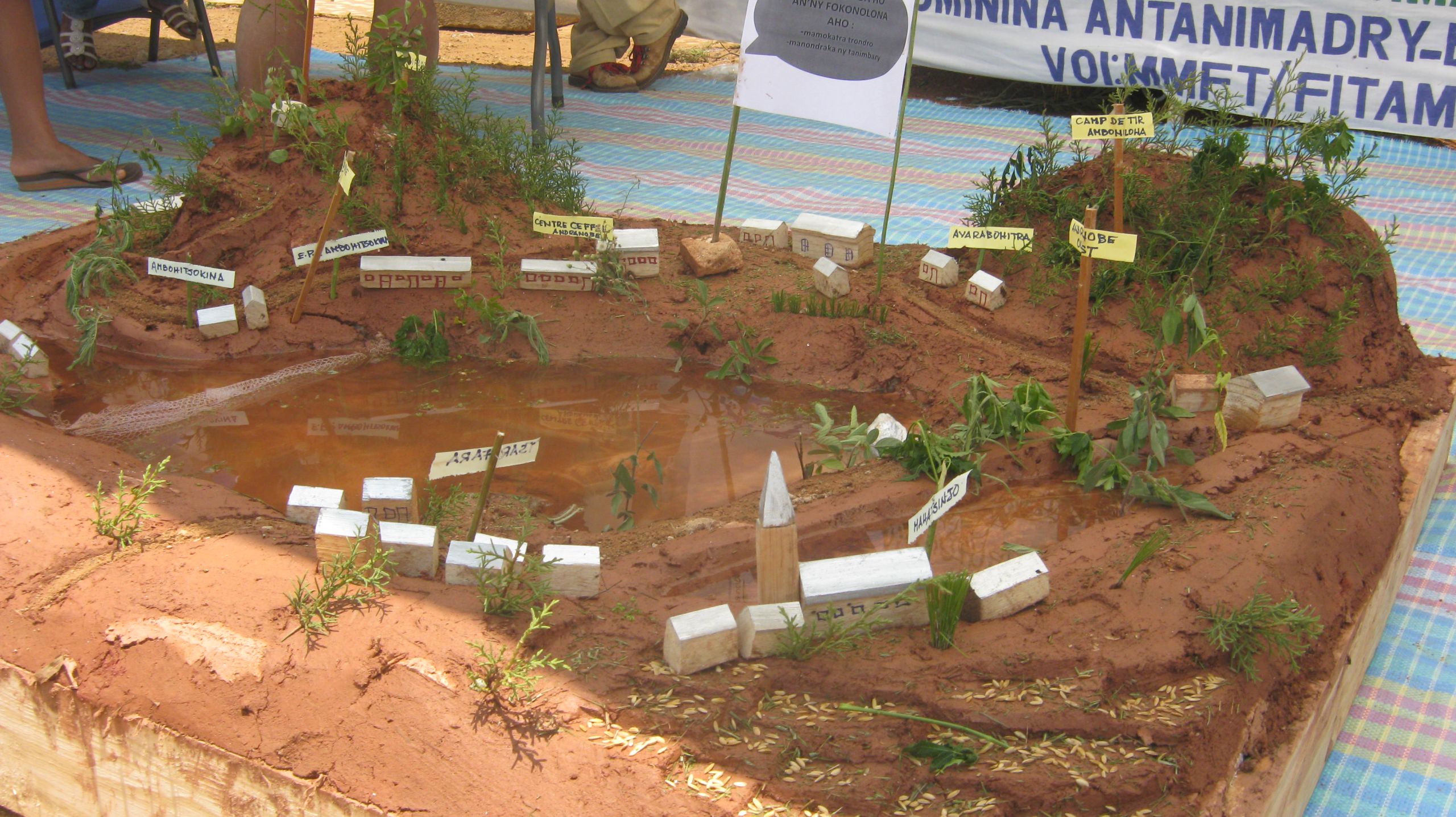
Model of the territory for demarcating lake and watershed. Photo: VOI TAMIA, 2013
In 2004, they applied for (and obtained) a contract for the management of the lake and the watershed to the surrounding communities.
This transfer of management authority empowered the local communities to take ownership of their resources and gave them the power to make decisions and regulate the lake’s access and use.
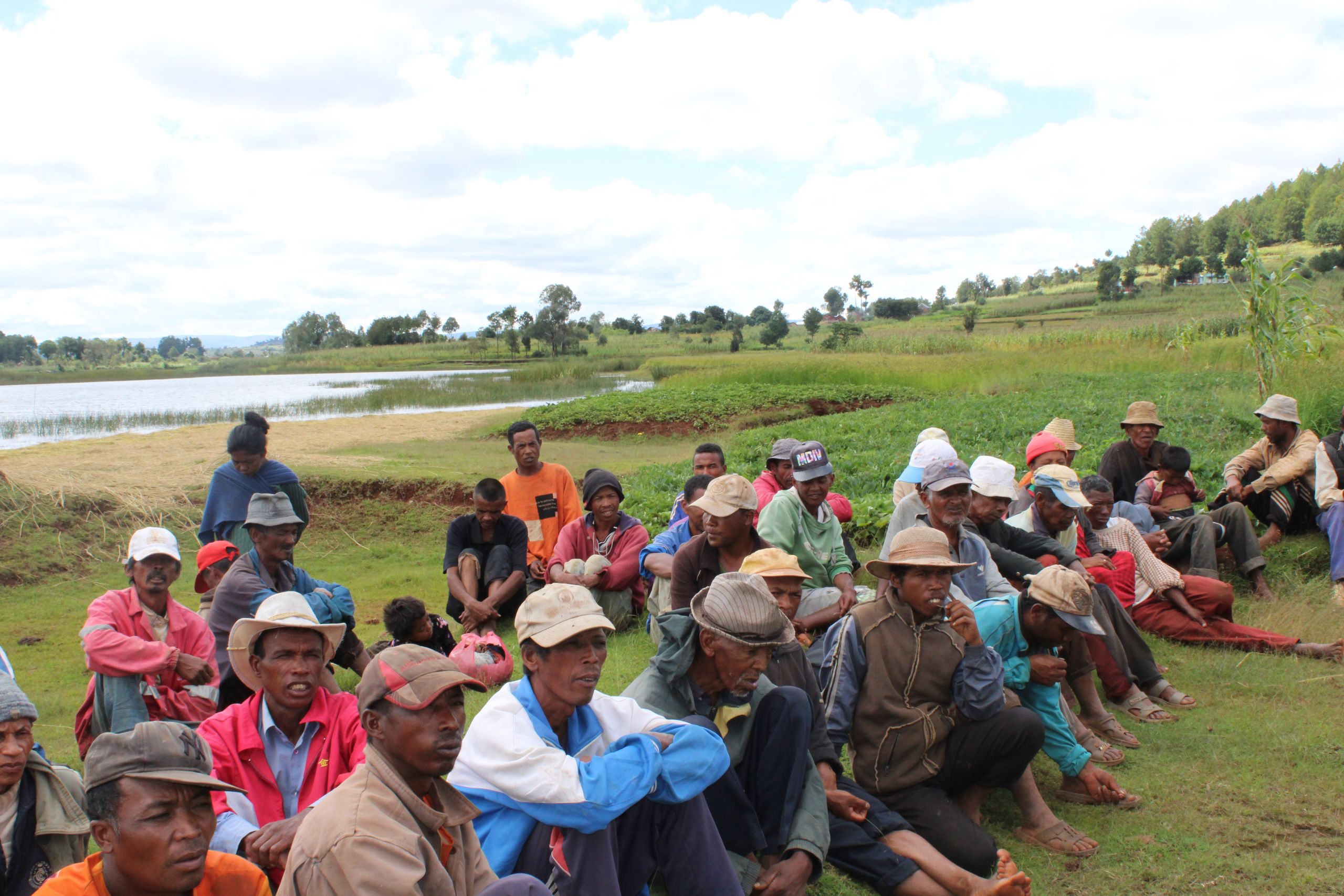
VOI TAMIA community meeting, 2000
TAMIA also set up a dina, which is a well-respected social convention, or a set of rules of conduct that govern relations within and between communities. These are voluntary rules, developed and applied by communities themselves, and normally take the form of oral tradition.
TAMIA used this dina to define access rights, share responsibilities in managing the fishing periods, set standards for authorised equipment, monitor regulations, and to apply sanctions in accordance with existing laws.
Community members also began monitoring fish behaviour, and members noticed that the spawning of fish began two months before closure of the fishing season.
Observing this, they discussed the issue and worked together with the Regional Directorate of Fisheries to advance the start of the closed season by one month. All of these measures contributed to an increase in fish production from 8 tonnes in 2004, to 12 tonnes in 2008, to 20 tonnes in 2019.
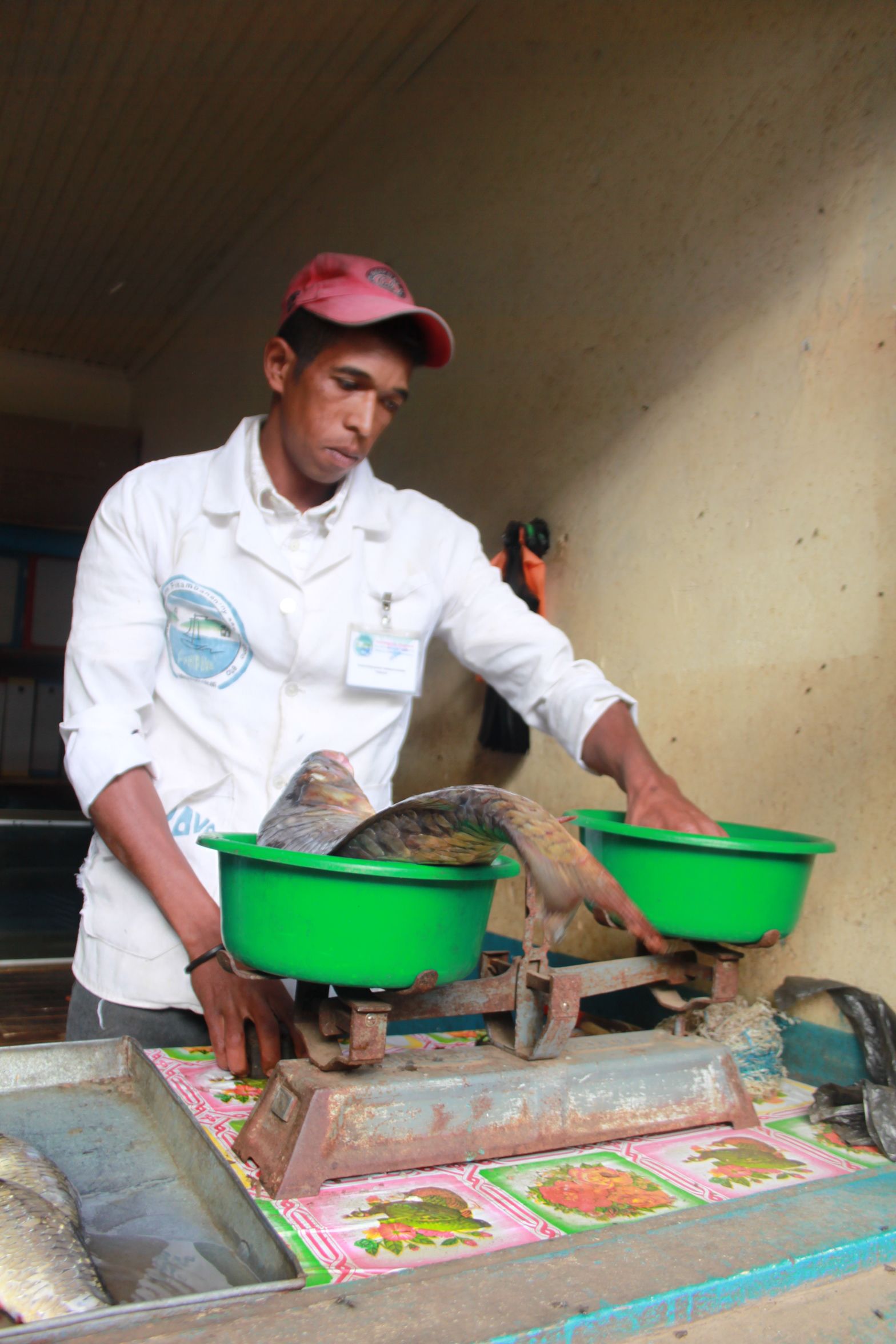
Weighing fish from Andranobe Lake at the point of sale. Photo: VOI TAMIA, 2015
‘Since members have applied and respected the rules and the laws, there has been a noticeable increase in the amount of fish. The fishermen and farmers are motivated by these results’.
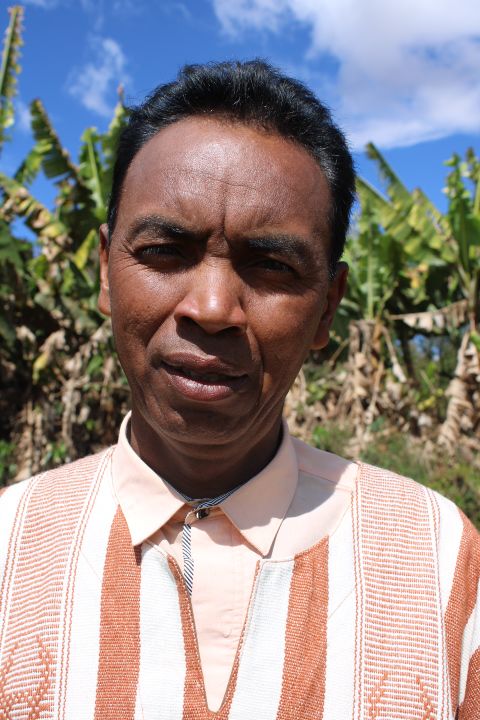
Henri Rakotoson, President of TAMIA
Henri Rakotoson, President of TAMIA

Model of the territory for demarcating lake and watershed. Photo: VOI TAMIA, 2013
Model of the territory for demarcating lake and watershed. Photo: VOI TAMIA, 2013

VOI TAMIA community meeting, 2000
VOI TAMIA community meeting, 2000
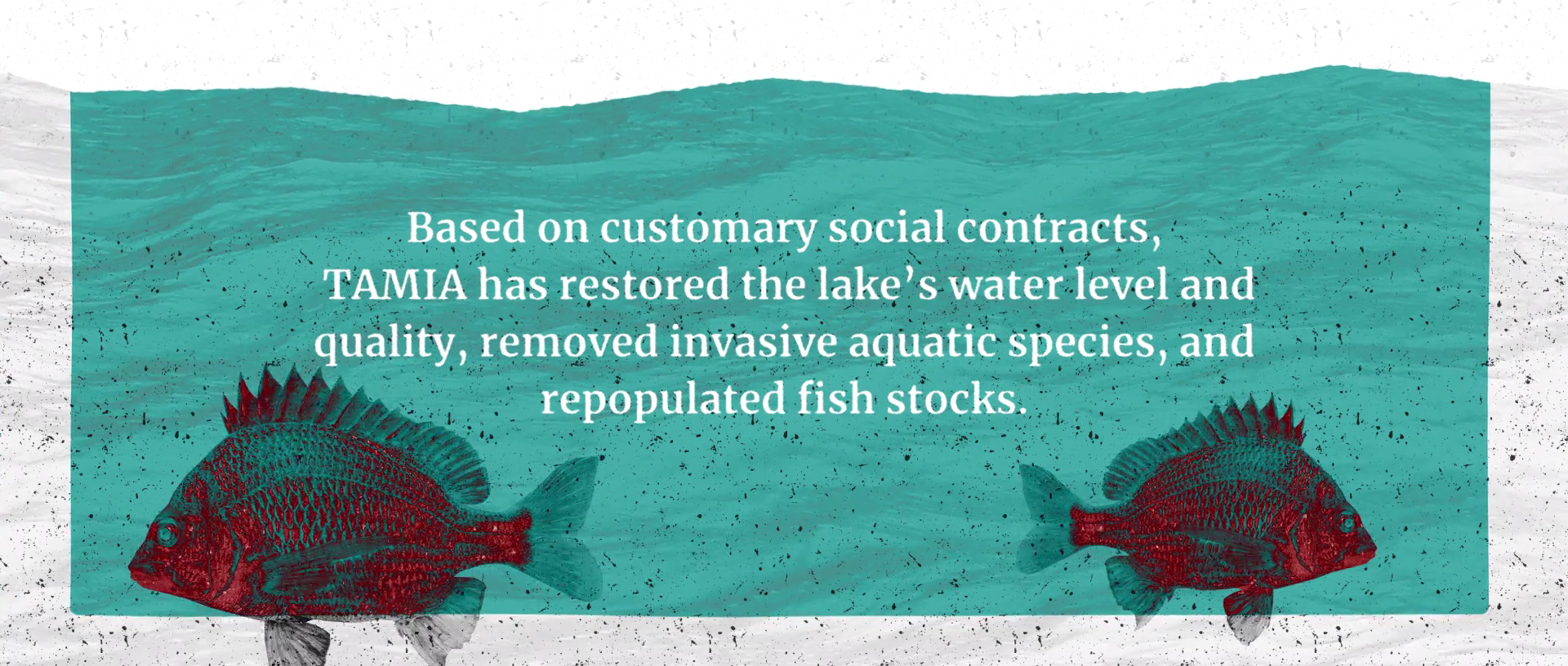

Weighing fish from Andranobe Lake at the point of sale. Photo: VOI TAMIA, 2015
Weighing fish from Andranobe Lake at the point of sale. Photo: VOI TAMIA, 2015
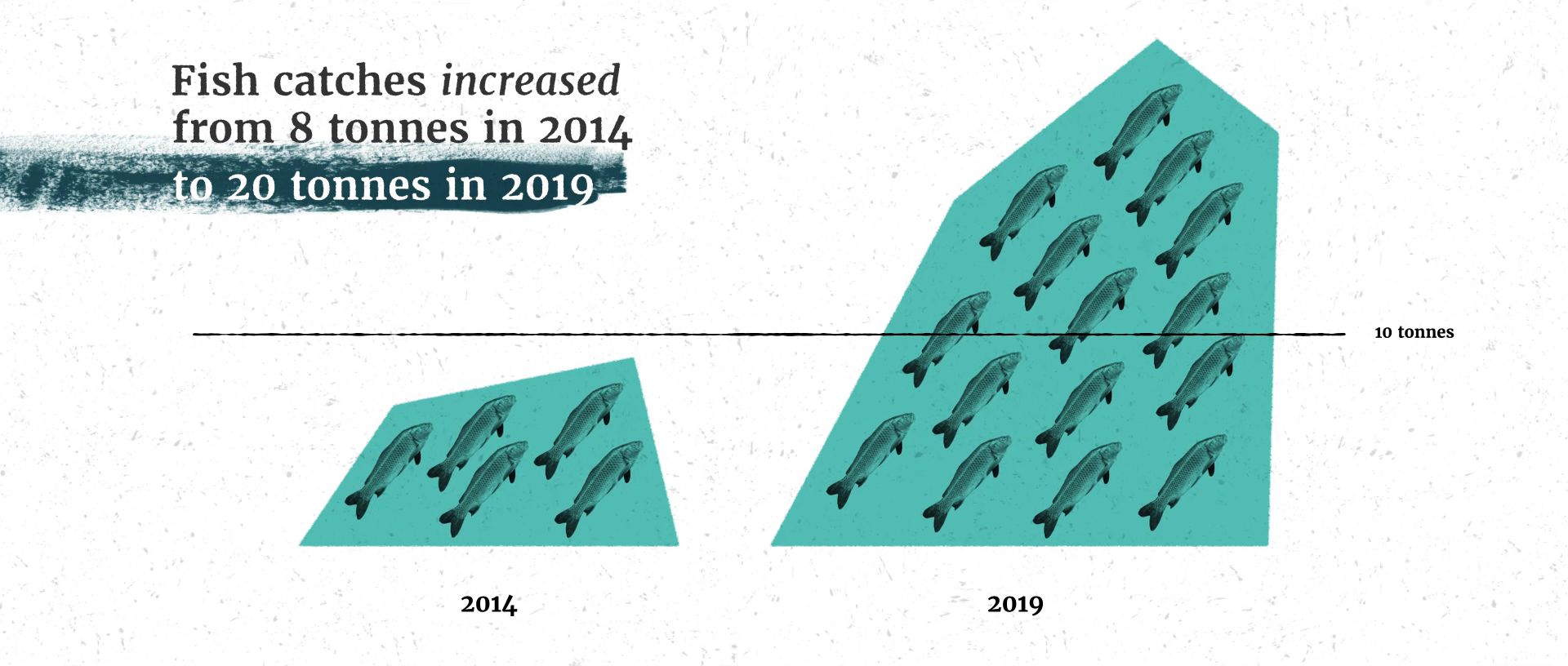
Reforestation & a return on investment
TAMIA also gradually restored and maintained the forest cover of the surrounding watershed, covering a full 45 hectares in 2019, to protect their water sources and reduce the silting of the Lake.
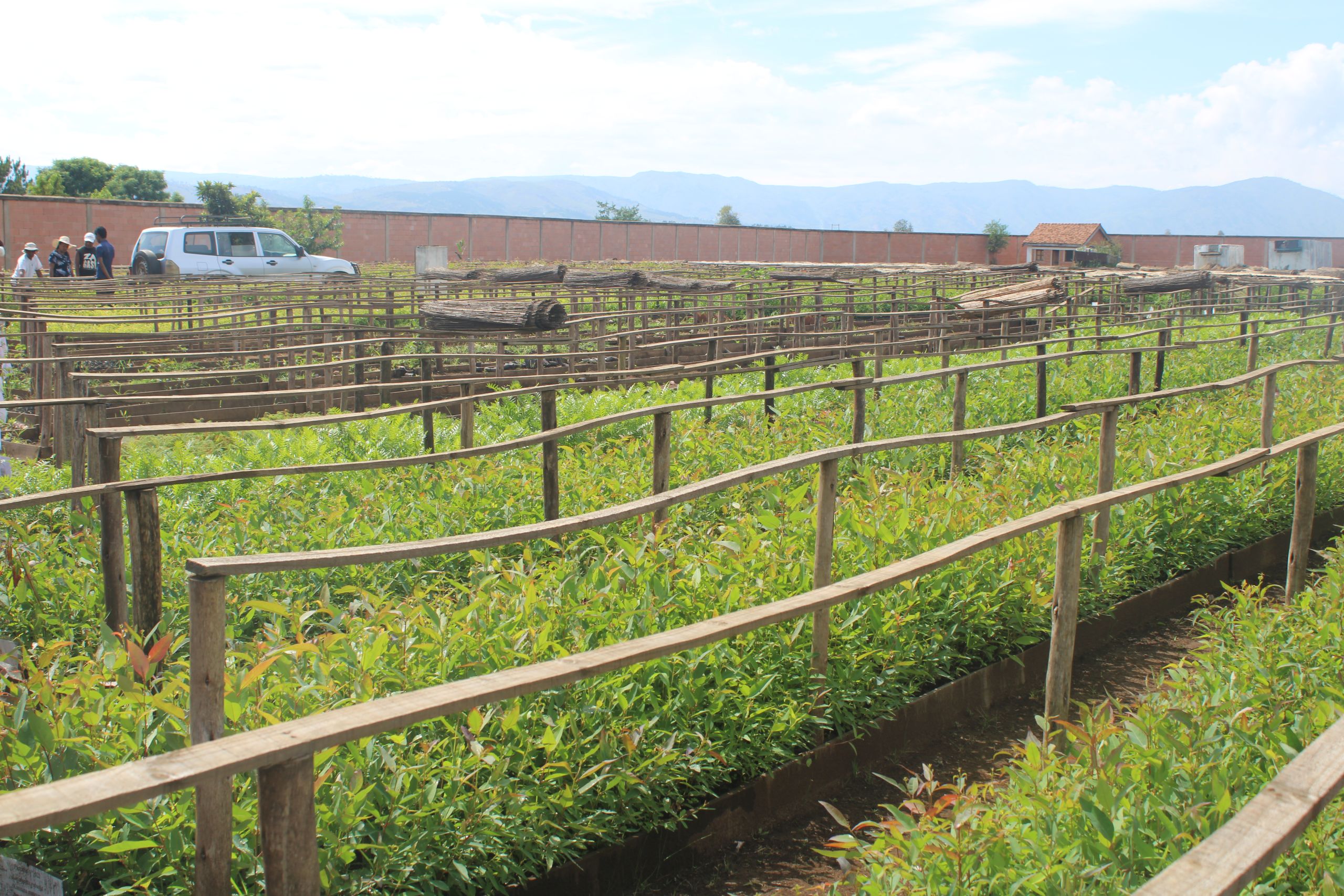
Plant seedling. Photo: VOI TAMIA, 2020
‘We don’t only stop at reforestation, with the young people, we take frequent care of young plants - we don’t just leave them unattended.’
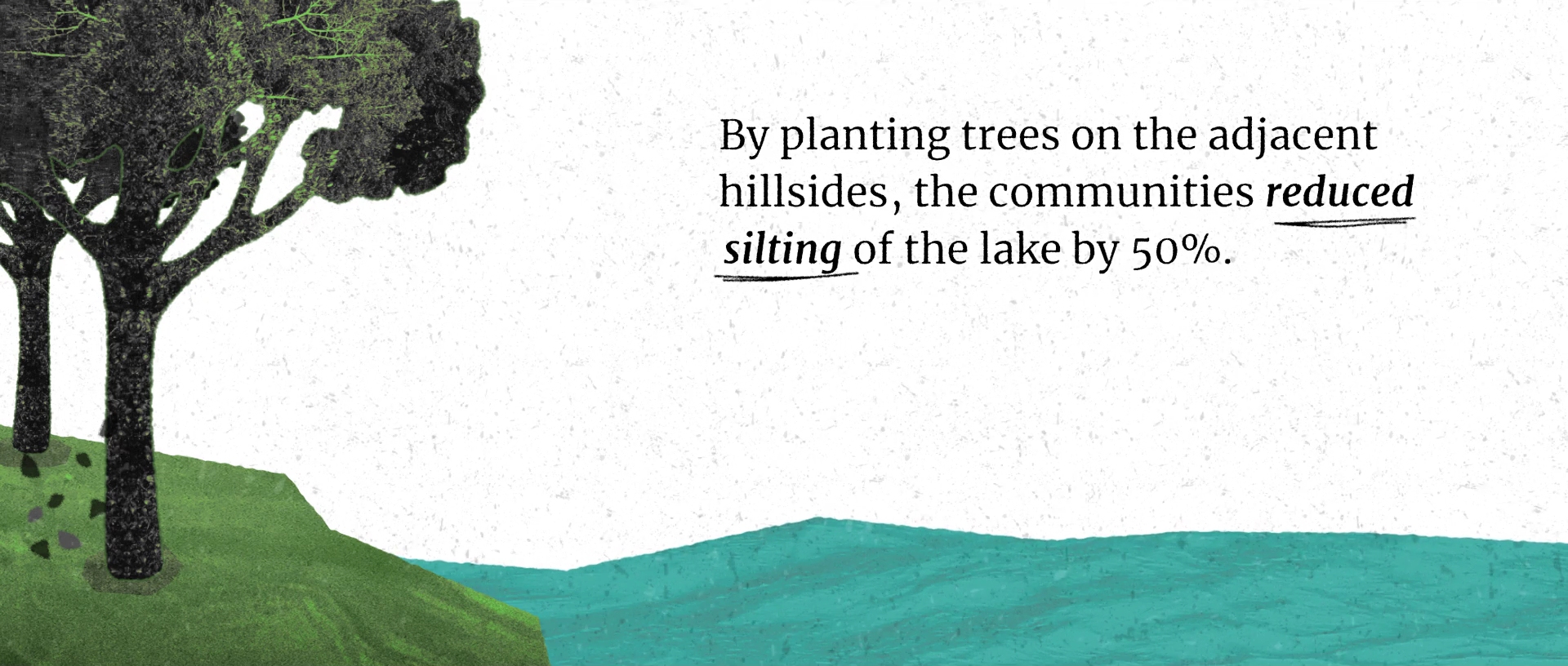
Due to reforestation efforts and improved management of the lake, there has been a noticeable increase in the variety of species of fish and birds that the lake supports.
Villagers have seen an increase in tilapia, black bass and rare species of eel and carp, and the Madagascar periwinkle (Catharanthus roseus) and Talapetraka (Centella asiatica) - highly prized medicinal plants - proliferate around the lake.
The Pinus kesiya and Pinus patula trees used in reforestation also created forest habitats for Turnix birds and tenrec mammals, which are endemic to Madagascar.

Plant seedling. Photo: VOI TAMIA, 2020
Plant seedling. Photo: VOI TAMIA, 2020

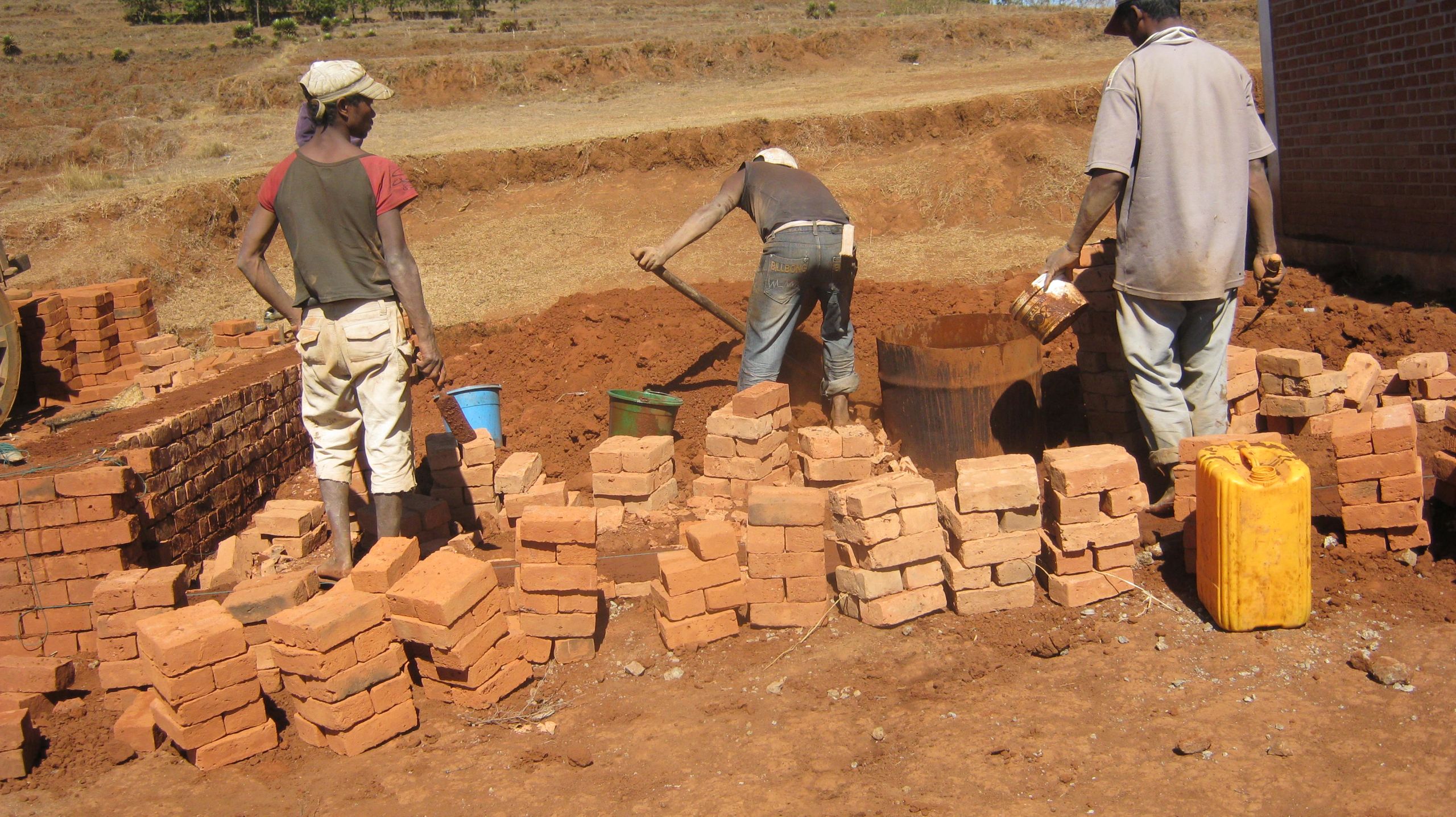
Community members working to establish clean drinking water. Photo: VOI TAMIA, 2013.
Community members working to establish clean drinking water. Photo: VOI TAMIA, 2013.
Water for Life
A water user association as well as farming and fishing co-operatives under the umbrella of TAMIA have further contributed to higher and more predictable incomes for villagers, as well as securing access to clean drinking water for 3,500 people.
Additionally, a total of 420 hectares of farms are under irrigation with lake water even in the dry season.

Community members working to establish clean drinking water. Photo: VOI TAMIA, 2013.
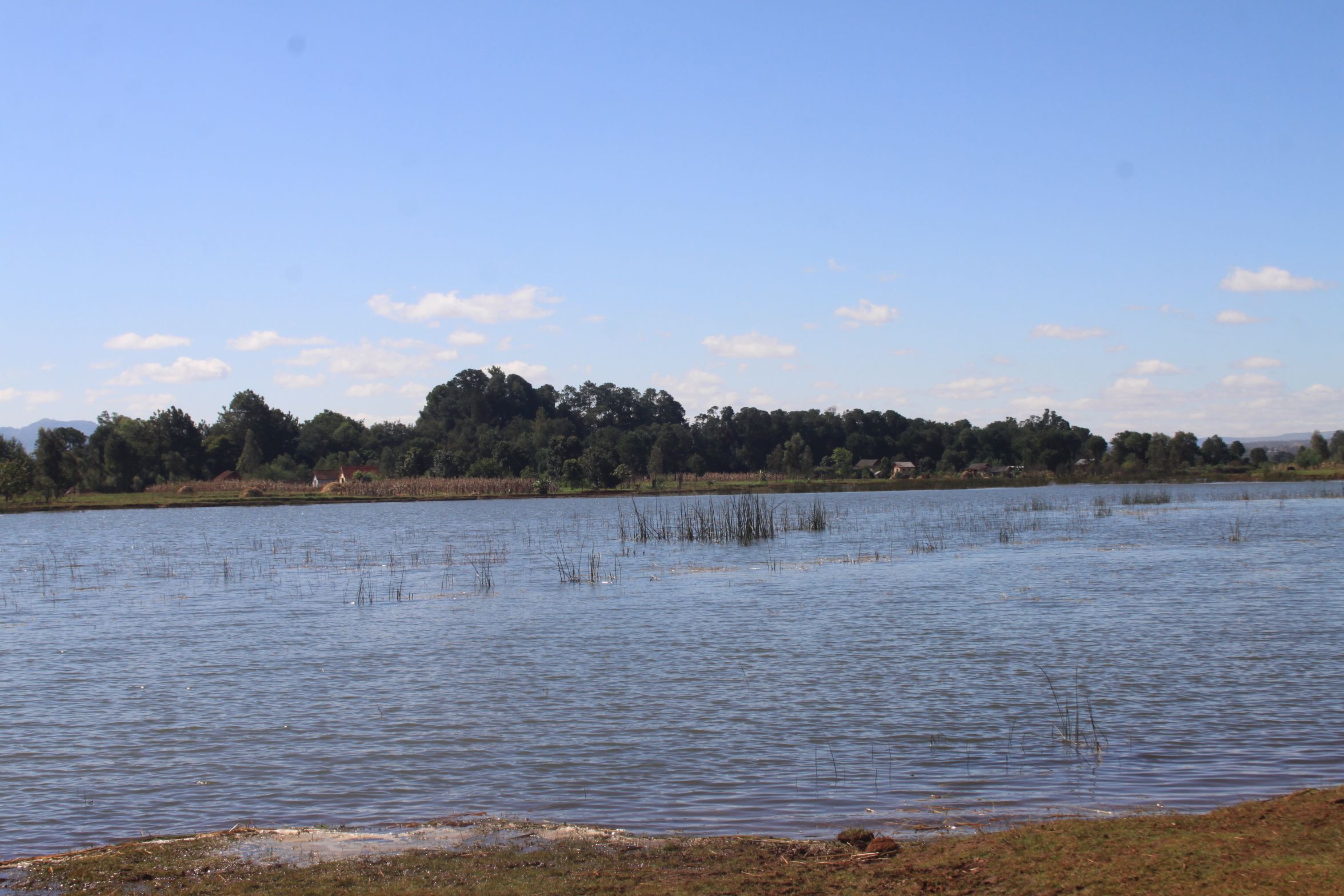
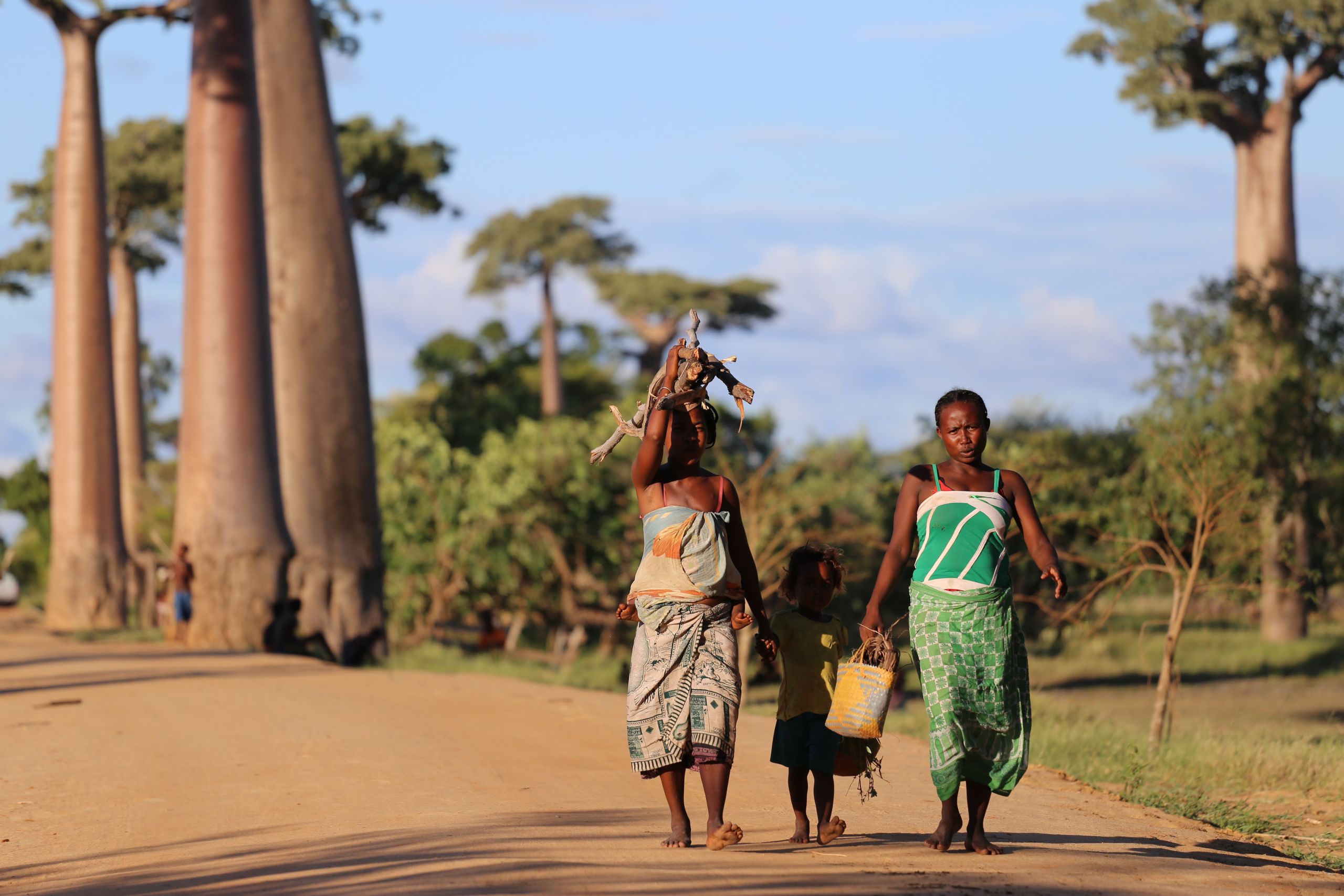
Photo: 2photo-pots, Unsplash
Photo: 2photo-pots, Unsplash
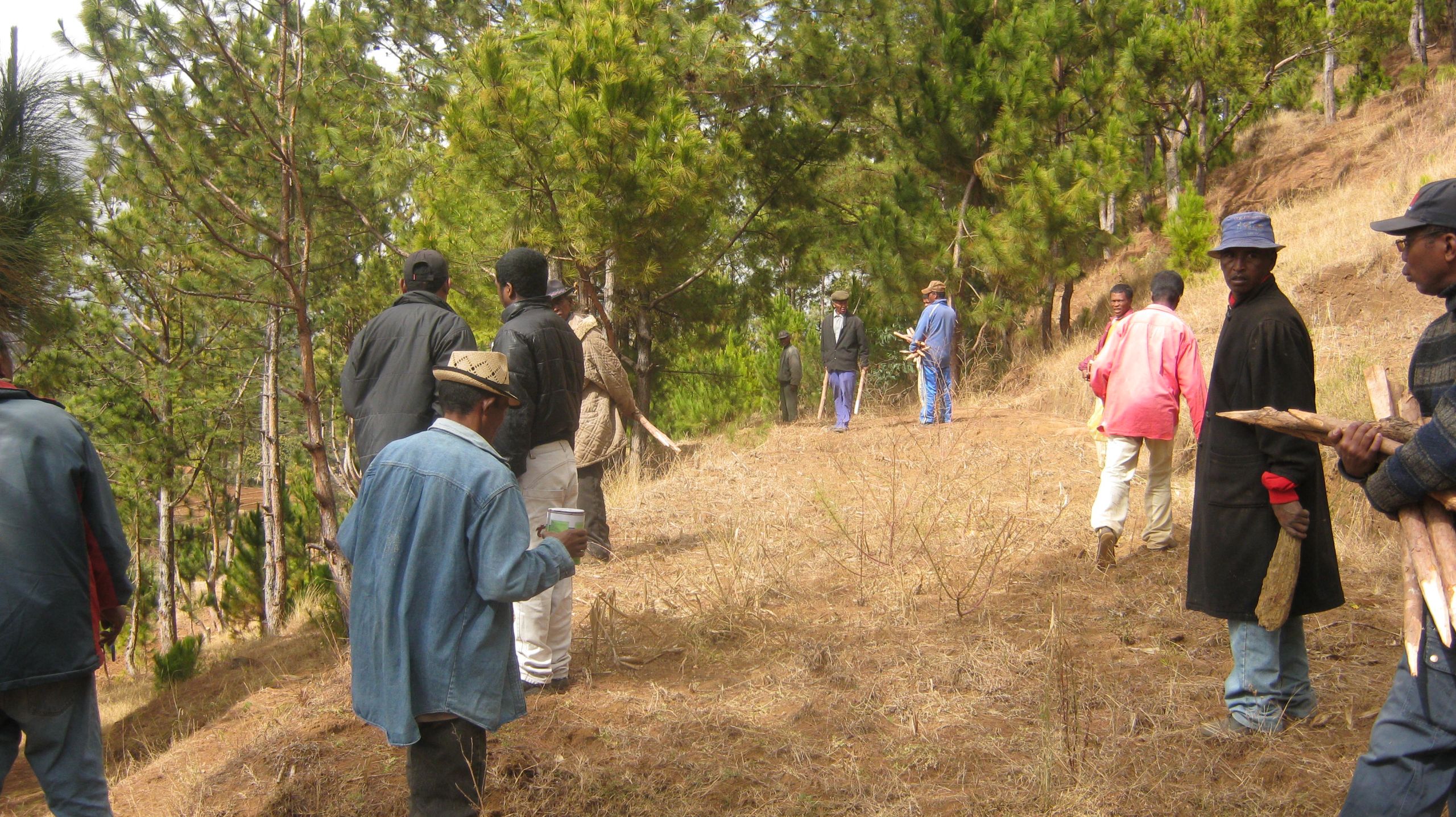
Delimitation and zoning in the context of transfer of management. Photo: VOI TAMIA, 2013.
Delimitation and zoning in the context of transfer of management. Photo: VOI TAMIA, 2013.
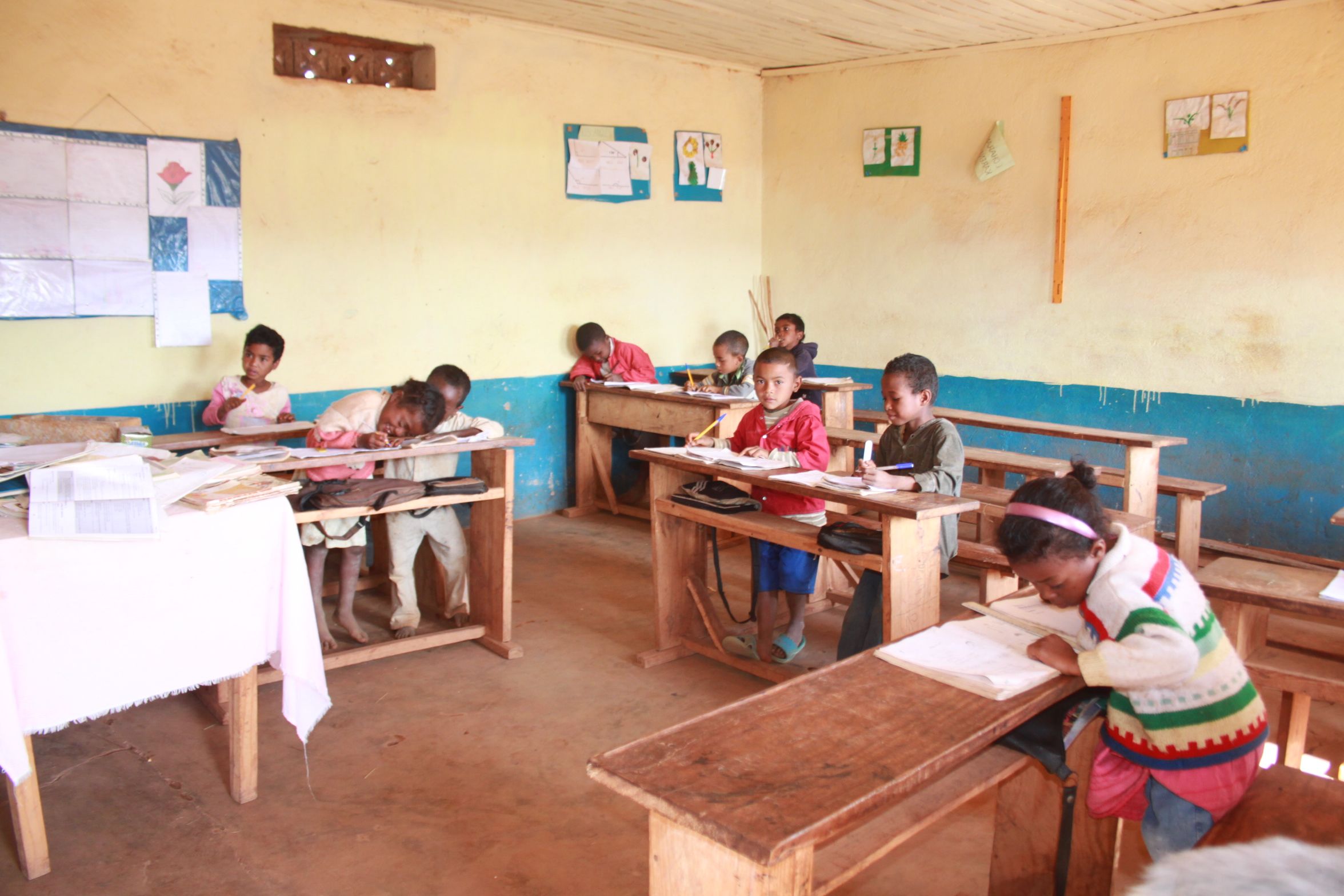
Ambohitsokina Primary School Schoolchildren. Photo: VOI TAMIA, 2015.
Ambohitsokina Primary School Schoolchildren. Photo: VOI TAMIA, 2015.
Small Grants = Big Impacts
With the acknowledgement of indigenous peoples and local communities’ crucial role in advancing the biodiversity conservation agenda, the GEF Small Grants Programme (SGP) has directed support to over 300 community-based initiatives in Madagascar since 2004, with a focus on indigenous peoples' and community conserved territories and areas (ICCAs).

Photo: 2photo-pots, Unsplash
With financial support from both the Global Environment Facility (GEF) and the Government of Germany through its Federal Ministry for the Environment, Nature Conservation and Nuclear Safety (BMU), the SGP has played an integral role in strengthening the self-determination principles of TAMIA and other grassroot community networks.
Initiatives supported include capacity-building of the various co-operatives and networks and replication of community governance systems across several regions and land tenure security. Furthermore, knowledge transmission was heavily supported through knowledge-exchange sessions among multi-level stakeholders and the development of communication and advocacy tools among the national networks.

Delimitation and zoning in the context of transfer of management. Photo: VOI TAMIA, 2013.
SGP is proud to have supported TAMIA, and appreciates that the Equator Initiative’s award is a prestigious acknowledgement of years of hard work. The SGP Madagascar is gratified to have been able to be there along the way - providing direct support and serving a singular function to help catalyse action on the ground.

Ambohitsokina Primary School Schoolchildren. Photo: VOI TAMIA, 2015.
‘Here is an example of the community and the environment taking care of each other. Here is an example that can be replicated not only throughout Madagascar, but throughout the world’.
SGP support in Madagascar highlights how community action can maintain the fine balance between human needs and environmental imperatives.
Click here for more information about the ICCA-GSI - The GEF Small Grants Programme
For more details on the SGP projects in Madagascar, the country profile is available here.
For more details on this specific project, refer to the project profile here.

Text by VOI TAMIA, Andrea Egan, Rissa Edoo, Annalisa Jose and Terence Hay-Edie / Photos courtesy of VOI TAMIA / Additional photos courtesy of Equator Initiative and Gregoire Dubois as noted.
Header photo: Fishermen on Andranobe Lake. Photo: VOI TAMIA
Location: Vakinankaratra, Madagascar
